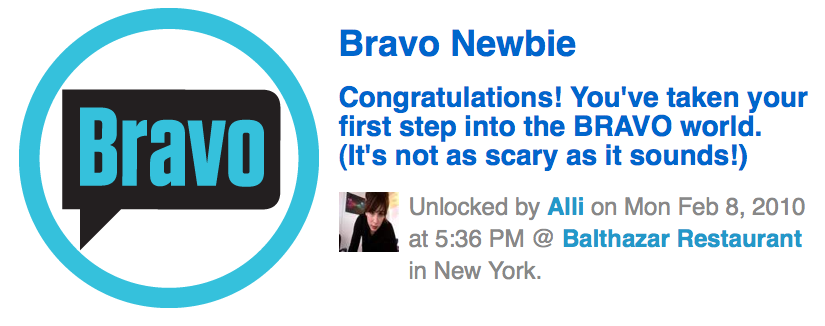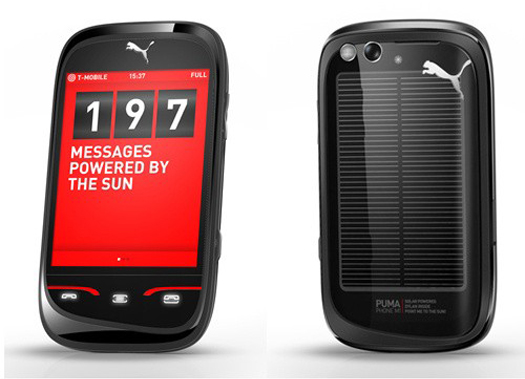
This article was originally published at AdAge.com, where we contribute content for the Digital Next blog.
Brands seem to be tripping over themselves to align with hot mobile startup Foursquare.
After Pepsi, Tasti D-Lite and Metro News dipped their toes, a wave of media brands including Bravo TV, HBO, Warner Brothers, Zagat and the History Channel are now testing the waters, experimenting with the platform in new and interesting ways.
These new deals represent an entertainment trifecta for Foursquare -- network TV, cable TV and movie studios. Last week Bravo announced integration for select shows. Today, Warner Brothers began a promotion for their star-studded movie "Valentine's Day." HBO also appears to be rolling out an effort for "How to Make It in America," a New York version of "Entourage." And the History Channel says it is also in the midst of partnering with Foursquare, though details are still being worked out.
"Entertainment brands are in an interesting spot," says Foursquare co-founder Dennis Crowley. According to Crowley, viewing behavior is changing. People are watching shows with computers on their laps or phones in their hands -- multitasking while they watch, communicating about the content, or just killing time during commercials. Some shows have tried to harness this behavior with text to vote options ("American Idol," many Bravo shows), Twitter feed streaming (Current TV, Fox's "Fringe"), and interactive game play (MTV's Backchannel).
Foursquare is offering another channel through which media companies can reach fans. The opportunity is to extend engagement beyond the screen -- both television and computer -- and into real life. On Foursquare, "when users are out, they get pings from these show reminding them about it. This has potential to get people thinking about the brand and the show," says Crowley.
So what do these "pings" entail exactly?
Once they have opted in, messages are pushed to Foursquare users through branded "tips" and "badges."
When users "check in" at a venue on Foursquare, they can see notes, called "tips," left by friends. In these campaigns, brands have left tips at selected locations, which users that add them as a friend can receive. These tips are generally related to the show/movie's characters or themes. So for example, followers of Valentine's Day on Foursquare will see tips about the most romantic places and experiences in New York City, San Francisco, Chicago, Los Angeles and Boston.
For HBO's "How to Make it in America," it seems users will see tips from select publishing partners including Blackbook, Urban Daddy, Flavorpill, Racked and Eater. While HBO has declined to comment on this campaign (its agency, phd, says it is still finalizing major details) branded tips are live, and the network has begun to follow certain Foursquare users. According to the page's copy:
Hustle your way in to the NYC scene with HBO's How to Make It. Unlock one or all four of the badges: Culture, Living, Cocktails, and Nightlife. Need some tips? Check out these sites Blackbook, Eater, Racked, Flavorpill, and Urban Daddy for more game. Then tune-in to HBO on Sundays at 10pm to follow Ben and Cam, two enterprising Brooklyn twentysomethings as they hustle their way through New York City, determined to achieve the American Dream.
Using bits of content, it seems HBO is hoping fans live vicariously through the characters and emulate their lifestyles. The Bravo integration is structured similarly, with tips from the channel's contestants and judges.
Another feature of Foursquare's brand integration is the "badge." Users earn badges based on where they check in; checking in at a gym frequently can earn them a "gym rat" badge, for example. Bravo, WB and likely HBO are using these as incentives to visit the places they've curated with tips. When users check in at a few of the romantic venues suggested by "Valentine's Day," they unlock a movie-themed badge, for example. These badges can even be tied to real-life rewards, which Bravo is doing through sweepstakes entries, awards and coupons.
In effect, these tips and badges turn brand into curator, guiding fans through a city, similar to Project Runway's "Guide to New York" on Socialight in 2007 and even Nike's recent True City iPhone app.
This brand activity is terrific for Foursquare's bottom line, but what will users think? Can brands be integrated seamlessly and add value to the experience? Or will users smell spam and run to Gowalla?
"Of course we are scared that everyone will hate it," says Tristan Walker, Foursquare's business development brain. But seeing as they're being called the "next Twitter," the company is in a position to be picky about its partners. If all they want to do is push messages to as many users as possible, Foursquare is not interested. "We've gotten a ton of interest from various entertainment brands," says Walker, "but we've gone with the ones that are relevant to our platform and can be made seamless to our user experience."
Media brands are an easy fit, too. They can provide content -- not "ads" per se -- that betters Foursquare as a whole. While some users may leave not-so-useful tips, they can effectively tell brands what to write. "You can guide them to come up with the best things that represent the elements of their show," says Crowley. And not only are they putting quality content into Foursquare, but they are also promoting the platform itself, investing in it with media dollars. Crowley hopes that this mainstream promotion will help them cross the chasm from "tech early adopters" to "normals."

Zagat's new integration will also lend more quality "professional" content to the service and help it reach new users. The restaurant review guide has populated five cities with tips that share their expertise--things like drink deals, the best times to dine, and what entrees to order. By checking in at Zagat-rated locations, users can unlock a new "foodie badge" and those that frequent a place most often might be featured on Zagat.com through a "Meet the Mayor" series.
Zagat's Ryan Charles says that Foursquare is a natural progression for them beyond iPhone, Android and the mobile web. "There is an obvious synergy between Zagat's expertise in helping people make quick, informed dining decisions and Foursquare's location-based platform," says Charles.

The reaction to Bravo's campaign has thus far been overwhelmingly positive. Foursquare is actively monitoring the results, getting feedback and seeing what worked and what didn't. "We don't want to be explicit in our advertising," says Walker. "We want to do it in a smart way, one where we can iterate upon the model without losing users. The fact that these campaigns are opt-in helps a great deal."
While most of the brands launching campaigns now are likely hoping for first mover cred rather than meaningful user numbers, monitoring and analytics will ultimately help Foursquare prove its value to brands. It has no CPMs, no traffic numbers, no "impressions." It is admittedly still trying to figure out its metrics, but they will be based on "engagement" over pure reach. "The challenge is going to be redefining what engagement really means," says Walker. "Is it tip unlocks? Check-ins at recommended places? We are working with these brands to find engagement metrics that work, and we are painstaking about getting feedback from them and build that analytics set that makes sense." According to Heather DiRubba from the History Channel, "the reason we are looking to get involved with Foursquare is because History is very active in the Facebook and Twitter communities, and we see partnering with Foursquare as a whole new way to deepen our social engagement with our fans."
In the future, expect to see more tangible rewards tied to Foursquare promotions with big brands. Zagat's Charles sees this as key to its growth. "As Foursquare expands from a social game to a platform that offers real-world incentives for users (like discounts and specials), their reach will undoubtedly expand." This will also provide an opportunity to better tie Foursquare brand campaigns with buying behavior. Did people actually watch the show or see the movie? Providing a trackable discount that users could redeem at a theater could help close this loop. Indeed, Walker sees education of the content distributors as the next logical step.
Foursquare is a young platform. But unlike most startups in their "experimental" phase, it is lucky enough to have big-name brand dollars to play with. While it walks the line between growing the ecosystem and monetizing it, Foursquare is hoping these things are not mutually exclusive. "We will build a product that is great for brands based on their needs," says Walker, "but only those that value the platform and want it to succeed."
See our post from earlier today for more details on Zagat's new integration with Foursquare




















